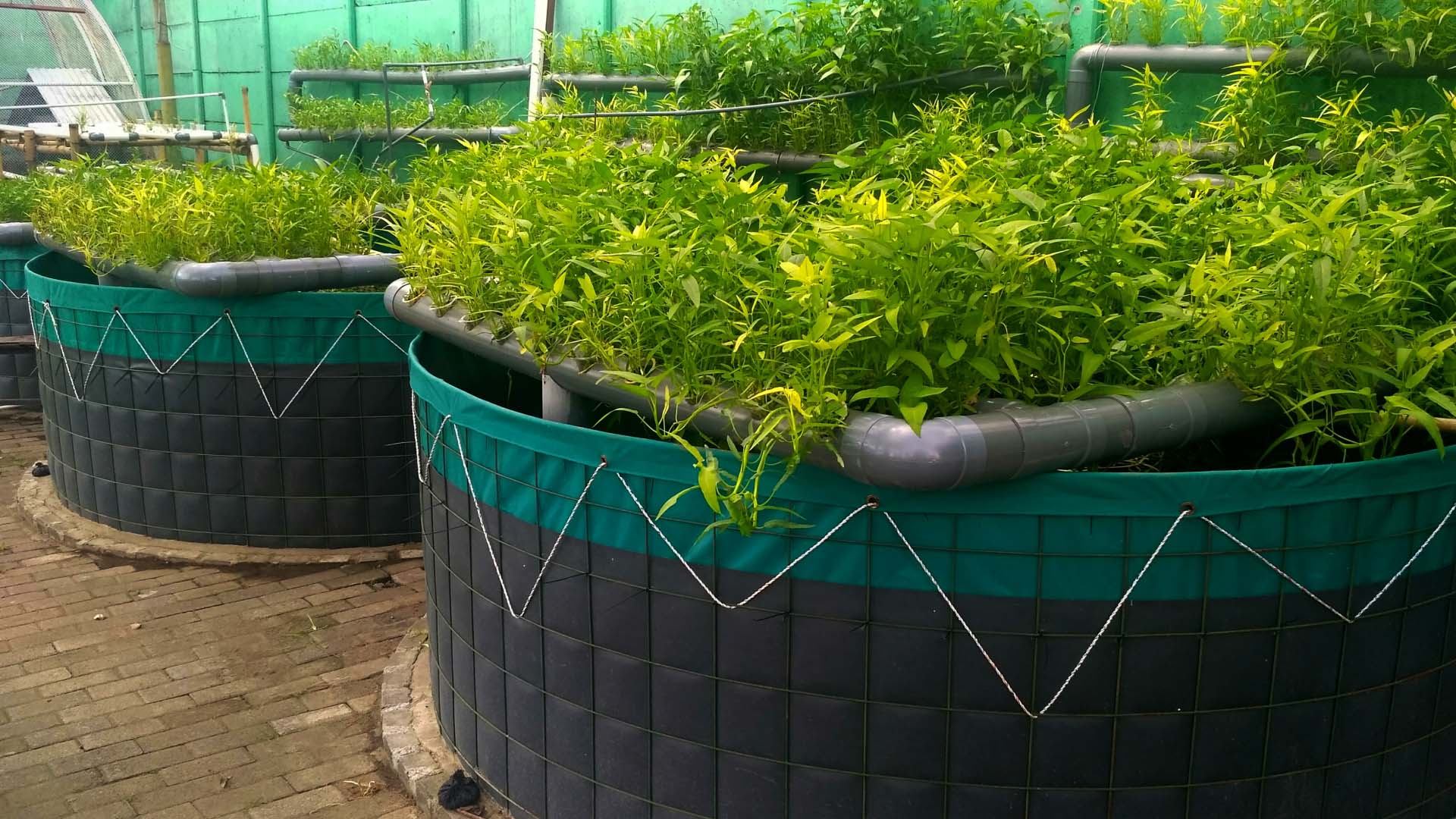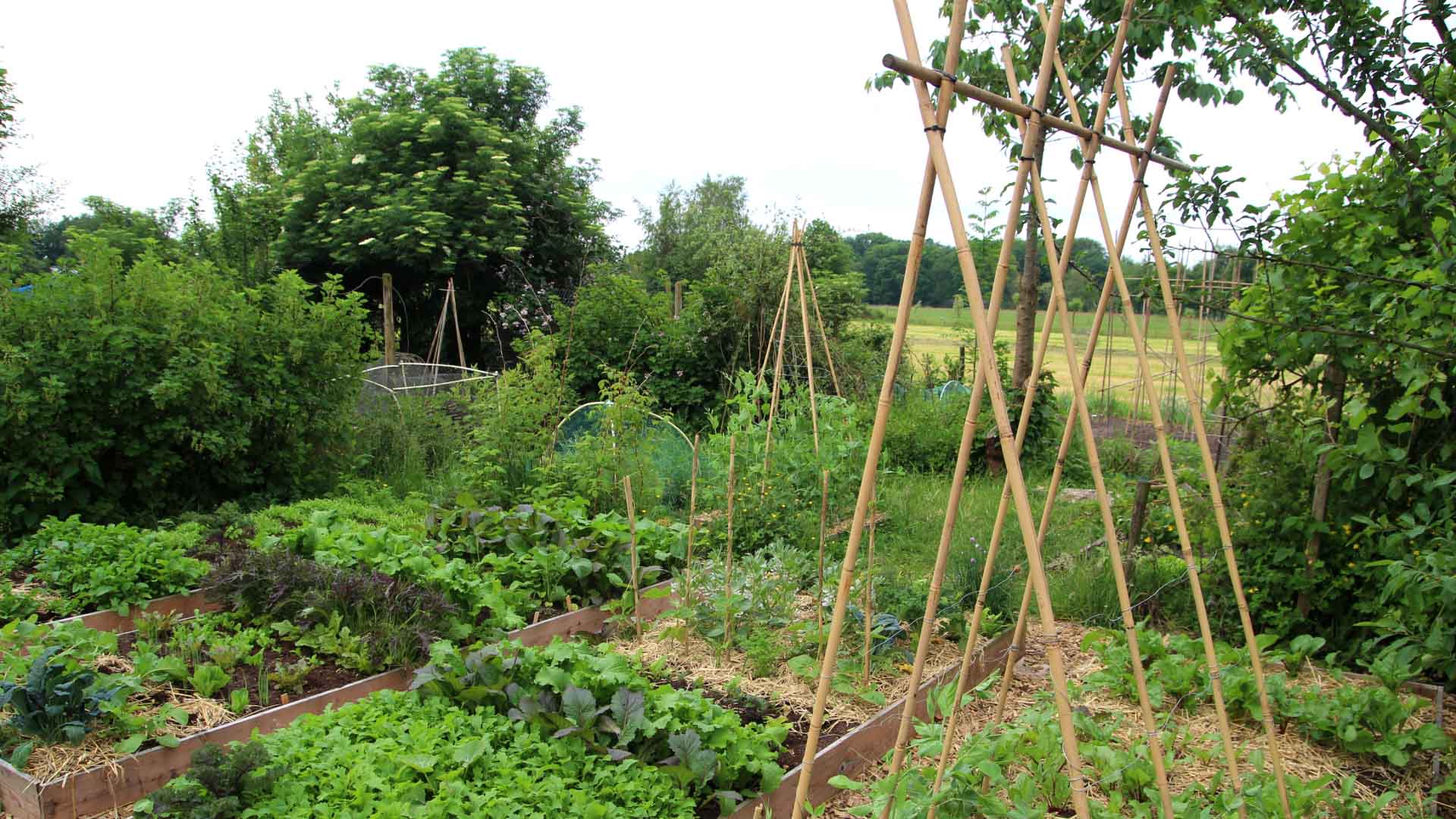Aquaponic System
Together, plants and fish form an aquaponics system, a term derived from the words “aquaculture” (the practice of raising fish in an enclosed system) and “hydroponics” (the growing of plants usually in a soil-less environment).
Aquaponic systems range from indoor to commercial sizes.
What is aquaponics?
The term “aquaponics” refers to a hybrid method of farming that combines aquaculture (fish farming) with hydroponics (growing plants in a nutrient solution). With the support of good bacteria, aquaponics systems can cultivate plant life and sustainably rear fish. Aquaponics is only successful when all of these parts function together in harmony. Using aquaponics, you may grow your own organic food in a small space with no maintenance.
How Does Aquaponics Work?
In aquaponics, fish are kept in a tank while plants are produced in the grow bed. Water from the fish tank, which contains ammonia, is pumped into the grow bed, where billions of naturally occurring helpful bacteria convert the ammonia to harmless nitrites and nitrates.
Plants use the nitrates, along with other nutrients, that they receive to flourish. In exchange, plant roots absorb harmful chemicals and wastes from the water. Once the cycle has been completed, the clean, oxygenated water returns to the fish tank.
Aquaponics Farming:
Aquaponics farming combines hydroponics and aquaculture. Fish excrement is nitrified by bacteria. They’re plant food. Hydroponic plants filter and recirculate tank water. Natural water-recycling ecosystems use 90% less water than aquaponics. The system doesn’t need pesticides, fertilizers, or herbicides.
Aquaponics farms are eco-friendly since they produce no chemical waste or discharge. Aquaponics boosts urban farmers’ productivity. Fish and fresh food are gathered.
Aquaponics Fish Tank:
An aquaponic fish tank, in which your fish can live, is a necessary component of the system. In aquaponics, a fish tank and grow bed should have a ratio of about 1: 1.
DIY Aquaponics:
A DIY aquaponics system might be costly. You may DIY an aquaponics system with recycled materials and receive higher food yields. Here are 2 DIY aquaponics concepts.
- DIY Bathtub Aquaponics System
-
DIY One Barrel Aquaponics System
Aquaponics Kit:
Aquaponics kits allow you to establish your own Aquaponics Garden in the comfort of your own garden.
How to choose the right aquaponics kit?
When choosing an aquaponics kit, there are a number of factors to consider, including:
- Number of people
- Space required
- Wall or floor installation
- Aesthetic rating
- Number of fish and plants you can grow
- How much produce per week (kg)
- How much money you will save on grocery bills
- Power type
- Lighting option
- Price
Best Fish for Aquaponics
A closed system can grow many fish. With aquaponics, you can keep several fish. Research the best fish for aquaponics in your area by weather and legality. The best choice for aquaponics is tilapia and goldfish.
Aquaponics Fish:
Tilapia is a resilient aquaponics fish. They’re hard to kill. They prefer 82–86°F but can thrive outside this range. Their pH range is 6.5 to 9. They perish at 50°F (10°C). Depending on the size and water temperature, harvesting tilapia takes six to eight months. When they’re 1 pound, harvest them.
Goldfish is a great choice as aquaponics fish, and it is easy to take care of. Goldfish prefer 78-82°F (25-27°C) water. It’s as hardy as tilapia at pH levels between 6 and 8Within a year, they should weigh a pound. Since goldfish aren’t typically caught for human consumption, this is less of a problem. One foot in length is possible for them.
Aquaponic Grow Bed:
The aquaponic grow bed holds the system’s water, media, and plants. It’s the place where you take care of and cultivate your plants. The grow bed, like the aquarium, is a self-contained habitat.
Getting the right grow bed depth for your media-based aquaponics system is essential to its success, as the grow bed provides the space for the plant root to establish and absorb nutrients from the water. Some of the best grow beds:
Aqua Bundance 300 Gallon Grow Bed
Aquaponics Bountiful 75 Gallon Grow Bed
Aquaponics Greenhouse:
Aquaponic greenhouses are the ones that shelter crops. It’s a structure with plastic or glass walls and roofing to grow plants in regulated climates. Greenhouses can range in size from huts to factories. A greenhouse can boost plant growth and fruit output and allow growers to cultivate species that wouldn’t survive in your environment.
The benefits of aquaponic greenhouses are:
- Protection
- Temperature Control
- Prevents water loss and contamination
- Use of natural water
- Year-round growing of food
Home Aquaponic Systems:
Home aquaponic are an excellent method to learn the basics and build a large-scale system. Some of the best home aquaponic systems are:
Go Green Aquaponics System
This package is good for aquaponics beginners. Single and double grow bed kits are available. Complete kit includes grow material, pump, digital thermometer, plumbing, and Master API water test kit. This beginning kit includes instructions and a 5-hour online aquaponics training.
AquaUrban 60 Gallon Aquaponics System
You may install this indoor or outdoor aquaponics kit. This is easy-to-assemble and utilize aquaponics system and is great for your house. This set comprises 60-gallon fish tanks and a grow bed made of UV-protected, food-safe PE plastic.
Indoor Aquaponics:
Indoor Aquaponics is the rearing of fish and growing plants in an indoor setup. To be accurate, plants only require nutrients and water from the soil; they do not actually require soil to grow. It is possible to grow plants without using soil if you have access to appropriate lighting and can provide the necessary nutrients and water to your plants in a contained environment inside with adequate ventilation.
Small Aquaponics System:
Small aquaponics system is the one that can be used on a desk, table, or countertop. As a beginner in aquaponics, this is an excellent method to get your feet wet because of how easy and cheap it is to put up. Greens, herbs, and flowers are just some of the many plant types that can be successfully cultivated in a desktop aquaponics system.
Conclusion:
Before starting, carefully plan your aquaponics system design. Aquaponics and all gardening require trial and error to master. Start your own system without fear. Once you start and learn the method, it will be easy. Soon you’ll be harvesting fresh and organic vegetables and fish for your family.



